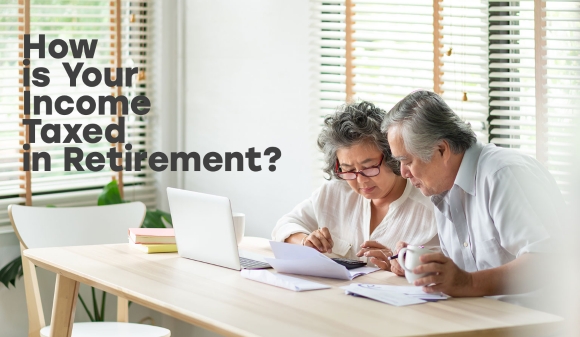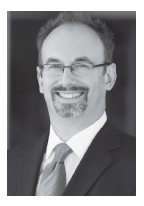How is Your Income Taxed in Retirement?

 Most people have a good sense of how income tax works during their working years. Generally, they earn a salary and tax is withheld by their employer off their pay cheque. Things like RRSP contributions, child care expenses, or charitable donations may generate a tax refund for them.
Most people have a good sense of how income tax works during their working years. Generally, they earn a salary and tax is withheld by their employer off their pay cheque. Things like RRSP contributions, child care expenses, or charitable donations may generate a tax refund for them.
But there can be a lot of unknowns when it comes to the taxation of retirement income.
RRSP/RRIF
Registered Retirement Savings Plan (RRSP) contributions result in tax deductions that save tax. In retirement, accumulated RRSP savings are needed to help fund expenses. You can take RRSP withdrawals at any time – with the exception of locked-in RRSP accounts that generally cannot be accessed until age 55 – though most savers wait until they have retired.
A RRSP withdrawal is fully taxable as income. There is withholding tax of five per cent on a withdrawal of up to $5,000. Withdrawals of $5,000 to $15,000 are subject to 20 per cent withholding tax. If a withdrawal of more than $15,000 is taken, there is 30 per cent tax withheld.
In Quebec, these rates are each cut in half as the province withholds their own provincial tax. The Quebec provincial tax withholding is 15 per cent regardless of the amount of the withdrawal.
The actual tax payable on a RRSP withdrawal may differ from the tax withheld. When you file your tax return for the year, you report the income and tax withheld and your calculated tax rate may be higher or lower than the initial tax deducted.
In retirement, RRSP accounts are commonly converted to Registered Retirement Income Funds (RRIFs). You can only have a RRSP until December 31 of the year you turn 71, so most RRSPs are converted to RRIFs by no later than that date. The alternative is to buy a registered annuity from an insurance company, with a pre-determined monthly payment from the insurance company for the rest of your life.
RRIFs have minimum annual withdrawals that need to be taken each year depending on your age. Each year, the minimum withdrawal percentage increases. You can choose to base the withdrawal rate on your spouse’s age when you open your RRIF, and if they are younger, the required withdrawals will be less. If you take only the minimum withdrawal from your RRIF, there will be no withholding tax. That does not mean you will not be subject to tax, however, as RRIF withdrawals will be reported as income on your tax return and tax calculated accordingly.
Many retirees will find they owe income tax every year because of the lack of withholding tax on their RRIF withdrawals, amongst other income sources. Consecutive years of owing more than $3,000 of income tax ($1,800 for Quebec residents) will cause the Canada Revenue Agency to start to request quarterly prepayments of tax, called tax instalments.
These tax prepayments will be credited towards your tax payable and are calculated based on your tax owing in the previous two years. Your tax owing for the current year may be higher or lower than the instalments requested but will be reconciled when you file your tax return.
Quebec residents pay provincial tax instalments to Revenu Québec based on a threshold of $1,800 for two consecutive tax years.
RRIF withdrawals can be preferable to RRSP withdrawals in retirement. Starting in the year the RRIF annuitant turns 65, they can retroactively split up to 50 per cent of their RRIF withdrawals with their spouse or common law partner. The benefit of doing so is that you can equalize your incomes and reduce your combined tax paid. The higher income spouse with RRIF withdrawals will generally transfer some portion of their RRIF income to the lower income spouse as part of their tax filing.
RRIF withdrawals after age 65 also qualify for the pension income amount tax credit. Taxpayers with at least $2,000 of eligible pension income – which includes RRIF withdrawals – can save up to $300 in federal tax and $51 to $149 of provincial or territorial tax depending on province or territory of residence.
The less common RRSP alternative of a registered annuity is also considered fully taxable income upon receipt each year. Annuity income is eligible for the pension income amount and pension income splitting.
TFSAs
Tax Free Savings Accounts (TFSAs) are always tax free. Investment income is tax free. Capital gains are tax free. Even withdrawals are tax free.
Many retirees will need to take TFSA withdrawals in retirement. Some retirees may choose to prioritize tax free withdrawals early in retirement to reduce immediate tax payable rather than withdrawing from RRSP accounts. This can sometimes be detrimental in the long run, because as RRSPs continue to grow, the larger future taxable withdrawals may cause their income to jump to a higher tax bracket or they may lose access to government benefits or have pensions clawed back in the future. This can sometimes lead to more lifetime tax payable than considering some RRSP withdrawals early in retirement.
Pensions
Workplace defined benefit (DB) pensions are subject to tax at source. The tax rates are like those that apply to salaries, so lower rates for smaller pensions and higher rates for higher pensions. The withholding tax does not take into account your other sources of income, tax deductions, or tax credits, so you may owe more tax or receive a tax refund when you file your tax return and report the income and tax withheld.
DB pensions are eligible for pension income splitting with a spouse, so up to 50 per cent can be shifted to your spouse or common law partner’s tax return.
Defined contribution (DC) pension plans are taxed much like RRSP withdrawals as discussed above but have not only minimum withdrawals starting at age 72, but maximum withdrawals each year as well.
Government pensions like Canada Pension Plan (CPP) and Old Age Security (OAS) are not subject to any required tax withholding. When you apply for CPP and OAS, you can elect to have tax withheld. Likewise, after you are receiving these pensions, if you find you owe tax every year, some recipients may choose to contact Service Canada to request a certain percentage or dollar amount of tax withholding.
If your income is high, exceeding $79,054 for the 2020 tax year, your OAS pension may be subject to a pension recovery tax commonly called the OAS clawback. A clawback could result in your OAS pension for July to June of the following year being reduced by 15 per cent of every dollar over the annual recovery threshold. This reduction will be considered a prepayment of tax and credited against your tax payable when you file your tax return.
Even if you have received OAS for the year and had no recovery tax applied initially, if your income exceeds the annual threshold when you file your tax return, the additional tax will be calculated and payable when you file your tax return.
Real Estate
If part of your retirement income will ultimately come from real estate, there may be tax implications. The tax is determined in the same way as your working years. If you are selling or downsizing your principal residence, there is generally no tax payable.
If you are selling a secondary property like a cottage, vacation property, or rental property, there will be tax implications. If you sell for a value that is higher than your original purchase price, plus renovations over the years, you will have a capital gain. A capital gain is taxable, however, only 50 per cent is subject to tax. Half of a capital gain is tax free.
A rental property owner can claim depreciation to reduce their taxable net rental income each year. This depreciation is called capital cost allowance (CCA). These deductions save tax when claimed, but the result is when a rental property is sold, all these previous deductions are brought back into income. This means all cumulative CCA claims historically for that rental property are considered taxable income in the year of sale.
If you borrow against your home equity in retirement, whether your principal residence or any other property, there are no tax implications. Using a line of credit or reverse mortgage will not trigger any tax.
Corporate Savings
Savings in a corporation can be more complicated than other sources when it comes to retirement income funding. Business owners who may have paid themselves salaries in the past may not be eligible to deduct those salaries against corporate investment income in retirement. If a corporation is no longer active and is simply holding investments – commonly referred to as a holding company – the most suitable withdrawal method may be by way of a dividend.
Dividends have no tax withheld and can only be paid to shareholders of the corporation. Under new Tax on Split Income (TOSI) rules introduced in 2018, spouses not active in a business that is still operating may not be eligible to receive dividends prior to a business owner’s age 65. However, in retirement, a spouse shareholder may be eligible to receive dividends in order to split income and reduce combined family tax regardless of age. If a spouse is not already a shareholder, a corporation can be restructured to allow the payment of dividends to both spouses.
Depending on the type of investments and investment activity in a corporation, a corporation may be able to pay tax free capital dividends to shareholders. Paying taxable dividends may result in corporate tax refunds – called refundable dividend tax – and may be worth considering even if a retiree does not need the funds. In other words, even if they could take money from other investment accounts, including non-registered investments or TFSAs, it can still be worth considering paying taxable dividends. The tax paid by the recipient may be less than the tax recovered by the corporation, resulting in a net benefit overall.
Summary
This article just scratches the surface of retirement income funding and some of the tax implications. There are other important considerations related to reducing tax payable on and after the death of the first spouse, how to reduce estate costs and tax as assets are passed on to children, and how to provide for minors, disabled beneficiaries, or charities in retirement and in your will.
The main takeaway should be to proactively consider your retirement income sources and funding before you retire and seek input from professionals as necessary.
Jason Heath is a fee-only, advice-only Certified Financial Planner (CFP) at Objective Financial Partners Inc. in Toronto, Ontario. He does not sell any financial products whatsoever.

